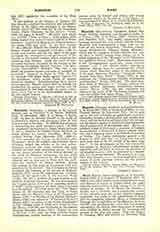

Bianchini (BLANCHINI), GIUSEPPE, Italian Oratorian, Biblical, historical, and liturgical scholar, b. at Verona, 1704; d. in Rome, 1764. Clement XII and Benedict XIV, who highly appreciated his learning, entrusted him with several scientific labors. Bianchini had contemplated a large work on the texts of the Sacred Scriptures, “Vindiciae Canonicarum Scripturarum Vulgatae latin editions”, which was to comprise several volumes, but only the first, in which, among other things, are to be found fragments of the “Hexapla” (cod. Chisianus), was published (Rome, 1740). Much more important is his “Evangeliarium quadruplex latin versionis antiquae”, etc., 2 vols. (Rome, 1749). Among his historical labors may be mentioned the fourth volume which Bianchini added to the publication of his uncle, Francesco Bianchini, “Anastasii bibliothecarii Vitae Rom. Pontif.” (Rome, 1735); he also published the “Demonstratio historite ecclesiasticm quadripartitae” (Rome, 1752-54). The chief liturgical work of Bianchini is “Liturgia antiqua hispanica, gothica, isidoriana, mozarabica, toletana mixta” (Rome, 1746). He also undertook the edition of the works of Bl. Thomasius (Tomasi), but only one volume was issued (Rome, 1741).
R. BUTIN

